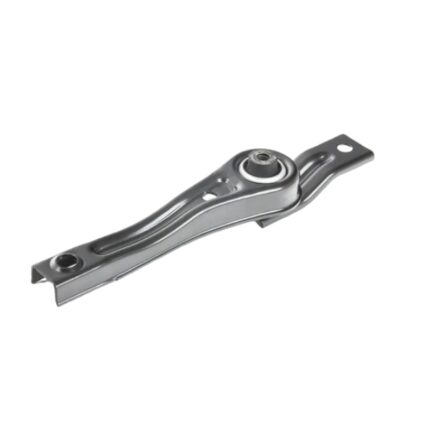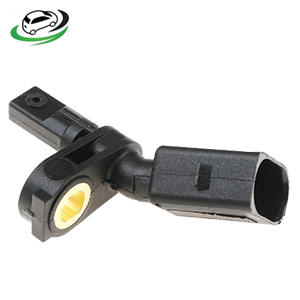Get Front Left ABS Wheel Speed Sensor Audi A1/ A2/ A3/S3/ Q2/ RS3 Sportback/ TT/TTS Coupe/Roadster / VW e-Golf/Fox/ Jetta/Lupo/Polo Vivo/Saveiro 6Q0927803B in Kenya
The Front Left ABS Wheel Speed Sensor is a critical component in a vehicle’s Anti-lock Braking System (ABS). This sensor plays a vital role in ensuring the safety and stability of the vehicle by providing real-time data on the rotational speed of the front left wheel. Understanding its function, design, importance, common issues, and maintenance is crucial for maintaining the effective operation of your vehicle’s braking system.
Function of the Front Left ABS Wheel Speed Sensor
The primary function of the Front Left ABS Wheel Speed Sensor is to monitor the rotational speed of the front left wheel and provide this information to the ABS control module. Here’s a detailed breakdown of its key functions:
- Speed Measurement: The sensor measures the speed at which the front left wheel is rotating. This information is crucial for the ABS system to determine if any wheel is beginning to skid or lock up during braking.
- Data Transmission: The sensor converts the wheel’s rotational speed into an electrical signal and sends this data to the ABS control module. The control module uses this information to regulate braking pressure and prevent wheel lock-up.
- System Feedback: By providing real-time data on wheel speed, the sensor allows the ABS system to adjust braking force to each wheel, improving vehicle control and stability during emergency braking or on slippery surfaces.
- Safety Enhancement: The sensor helps prevent wheel lock-up, which can lead to skidding and loss of control. This contributes to overall vehicle safety by enhancing braking performance and maintaining traction.
Components of the Front Left ABS Wheel Speed Sensor
The Front Left ABS Wheel Speed Sensor typically consists of several key components that work together to monitor and transmit wheel speed data:
- Sensor Body: The sensor body houses the internal electronics and is usually made of durable materials to withstand harsh conditions such as heat, moisture, and road debris.
- Magnetic Coil or Hall Effect Sensor: The sensor uses either a magnetic coil (inductive sensor) or a Hall Effect sensor to detect changes in the magnetic field caused by the wheel’s rotation. This component generates an electrical signal based on the wheel’s speed.
- Sensor Tip or Pickup: The sensor tip is positioned close to the rotating wheel hub or a toothed reluctor ring. It detects the changes in the magnetic field as the wheel rotates and generates the electrical signal.
- Electrical Connector: The electrical connector provides the interface between the ABS sensor and the vehicle’s wiring harness. It ensures a secure connection for transmitting the wheel speed data to the ABS control module.
- Reluctor Ring (if applicable): In some designs, a reluctor ring or tone ring is attached to the wheel hub. The sensor reads the teeth or slots on this ring to determine wheel speed.
Importance of the Front Left ABS Wheel Speed Sensor
The Front Left ABS Wheel Speed Sensor is crucial for several reasons:
- Enhanced Safety: By providing real-time data on wheel speed, the sensor helps the ABS system prevent wheel lock-up during braking. This reduces the risk of skidding and loss of control, especially on slippery or uneven surfaces.
- Improved Braking Performance: The sensor allows the ABS system to adjust braking pressure to each wheel individually. This improves braking performance and vehicle stability during emergency stops or harsh braking conditions.
- Traction Control: The sensor’s data is also used by other vehicle systems such as traction control and stability control. By maintaining optimal wheel speed, these systems enhance overall vehicle handling and safety.
- Prevention of Premature Wear: Proper function of the ABS sensor helps prevent uneven or excessive wear on braking components, as it ensures balanced braking force distribution.
Common Issues with the Front Left ABS Wheel Speed Sensor
Despite its robust design, the Front Left ABS Wheel Speed Sensor can experience several issues over time. Common problems include:
- Sensor Contamination: Dirt, debris, or metal filings can accumulate on the sensor tip or reluctor ring, affecting its ability to detect wheel speed accurately. This can lead to erratic ABS performance or sensor failure.
- Wiring Issues: The wiring connecting the sensor to the ABS control module can become damaged or corroded, leading to intermittent or complete loss of signal. This can result in ABS system malfunctions or warning lights.
- Sensor Wear: Over time, the sensor’s internal components can wear out or become damaged. This can affect its accuracy and lead to ABS system issues.
- Faulty Reluctor Ring: If the reluctor ring is damaged or misaligned, the sensor may not be able to accurately read wheel speed, affecting ABS performance.
- Electrical Failures: Internal electrical failures within the sensor can result in a loss of signal or incorrect data transmission to the ABS control module.
Signs of a Failing Front Left ABS Wheel Speed Sensor
Recognizing the signs of a failing ABS wheel speed sensor can help prevent further issues with the braking system. Common symptoms include:
- ABS Warning Light: A common indicator of a faulty ABS sensor is the illumination of the ABS warning light on the dashboard. This signals a potential problem with the ABS system or one of its components.
- Traction Control Warning Light: If the traction control system also uses data from the ABS sensor, a failing sensor may trigger the traction control warning light.
- Erratic Braking Performance: If the ABS sensor is not functioning correctly, you may experience erratic or inconsistent braking performance, such as sudden changes in braking force or instability during braking.
- Increased Skidding: A malfunctioning ABS sensor can lead to increased skidding or loss of control during braking, especially on slippery surfaces or during emergency stops.
- Unusual Noises: You may hear unusual noises from the ABS system, such as grinding or clicking sounds, if the sensor is failing or has become damaged.
Maintenance and Replacement of the Front Left ABS Wheel Speed Sensor
Proper maintenance and timely replacement of the Front Left ABS Wheel Speed Sensor are essential for ensuring optimal ABS performance and vehicle safety. Here are some tips:
- Regular Inspection: During routine vehicle maintenance, inspect the ABS sensor and its wiring for signs of damage, wear, or contamination. Ensure that the sensor tip and reluctor ring are clean and free from debris.
- Check for Error Codes: Use a diagnostic scanner to check for error codes related to the ABS system. This can help identify issues with the ABS sensor or other related components.
- Clean the Sensor: If the sensor is contaminated, clean it carefully with a non-abrasive cleaner. Avoid using harsh chemicals or abrasive materials that could damage the sensor.
- Replace Faulty Sensors: If the ABS sensor is found to be faulty or malfunctioning, it should be replaced promptly. Follow the manufacturer’s guidelines for replacement and ensure that the new sensor is properly installed and calibrated.
- Professional Assistance: If you are unsure about the condition of the ABS sensor or how to perform maintenance or replacement, consult a professional mechanic. They can diagnose the issue accurately and ensure proper repair or replacement.
Follow us on Facebook for more parts.



